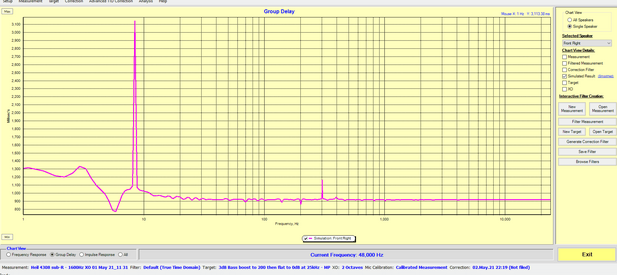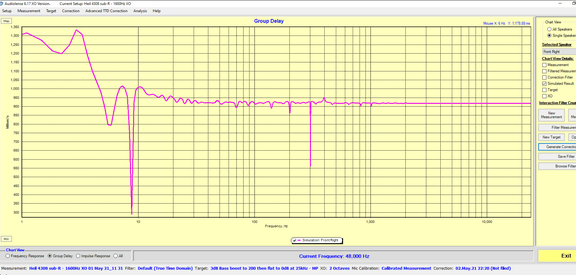Hi @juicehifi
I'm very happy with SQ but I've been playing around with correction procedure design to see if I can see any improved simulations.
My limited understanding is that we want to convert group delay 'peaks' into 'dips' ?
Is that a good understanding of the general goal when looking at group delay simulation results?
So I've managed to convert this (peak at 300 Hz) :

To this (dip at 300Hz):

Is this an example of a good outcome for group delay?
The large size of the dip is not a concern?
I'm very happy with SQ but I've been playing around with correction procedure design to see if I can see any improved simulations.
My limited understanding is that we want to convert group delay 'peaks' into 'dips' ?
Is that a good understanding of the general goal when looking at group delay simulation results?
So I've managed to convert this (peak at 300 Hz) :

To this (dip at 300Hz):

Is this an example of a good outcome for group delay?
The large size of the dip is not a concern?















